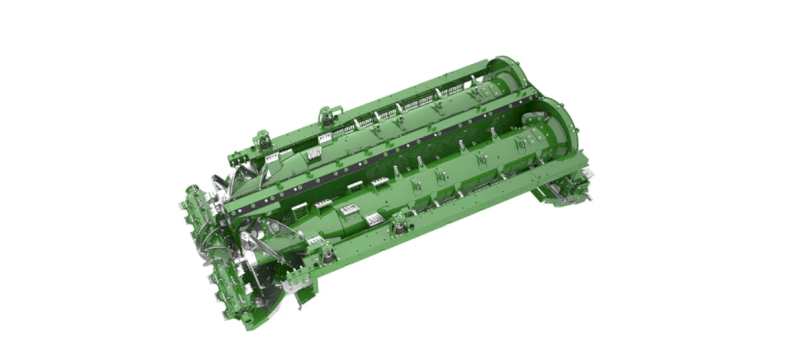Combine Harvester Types - Twin Rotor
- By: "Farm Tender" News
- Machinery & Equipment News
- Sep 19, 2024
- 1748 views
- Share

By Phil Rowntree - 0428 659 056 - philr@farmtender.com.au
All modern combines have the same task to achieve, and it is one of the most labour-saving inventions of its time: They are designed to:
- Cut the crop
- Thresh the crop
- Separate the grain from the heads
- Clean the straw and chaff from the grain
Twin Rotor:
The first commercial twin-rotor combine was manufactured by Sperry New Holland and has been available since 1975. The first model was known as a TR70. In today's market, not all manufacturers offer a twin rotor combine, but it seems to be more popular in the Australian marketplace. The twin rotor design, as did the single rotor design, departed from the traditional conventional combine harvester in that threshing and separation were performed predominantly by the rotor, as opposed to the drum/cylinder and straw walker conventional machines.
As with all combines the crop flows in via the feeder housing. At this point it will be handled by an east/west feeding drum or beater depending on manufacturer. This drum, beater generally runs at a lower RPM than the rotor and will assist with the crop entering the rotor. Some separation may be present at this point.
Once the crop has entered the rotors, grain is predominantly removed by centrifugal force rather than gravity in the spinning motion. Pegs and or rasp bars can be used in the rotors depending on crop type or harvesting conditions.
The twin rotors are smaller in diameter than a single rotor machine. As such the crop is forced between the rotors and the concave threshing/separating the grain at a higher RPM. This creates more centrifugal force and promotes a higher throughput of material. As per single rotor combines the rotor RPM can be adjusted to suit conditions. A twin rotor machine generally has a longer rotor length than a single rotor machine. As with other combines, rotor pitch is also to be considered in performance.
Rotor design, single and twin, varies between brands and models. Each manufacturer will have areas of design where it feels it is better than the competition.
The majority of remaining straw will exit the combine via the rear of the rotors this may pass through a chopper/beater system. Clean grain and chaff etc will fall on to the sieves. As per the conventional combines the use of fans, gravity and sieves, the remaining straw is separated from the grain. The clean grain then falls through adjustable sieves to be transferred to the grain tank.
Advantages:
- High Capacity.
- Soft threshing of fragile grains.
- Ability to handle wide range of crop types.
Disadvantages:
- Higher power requirements than a single rotor.
- More moving parts than a single rotor.
- Hard on straw and can pulverise.









Share Ag News Via